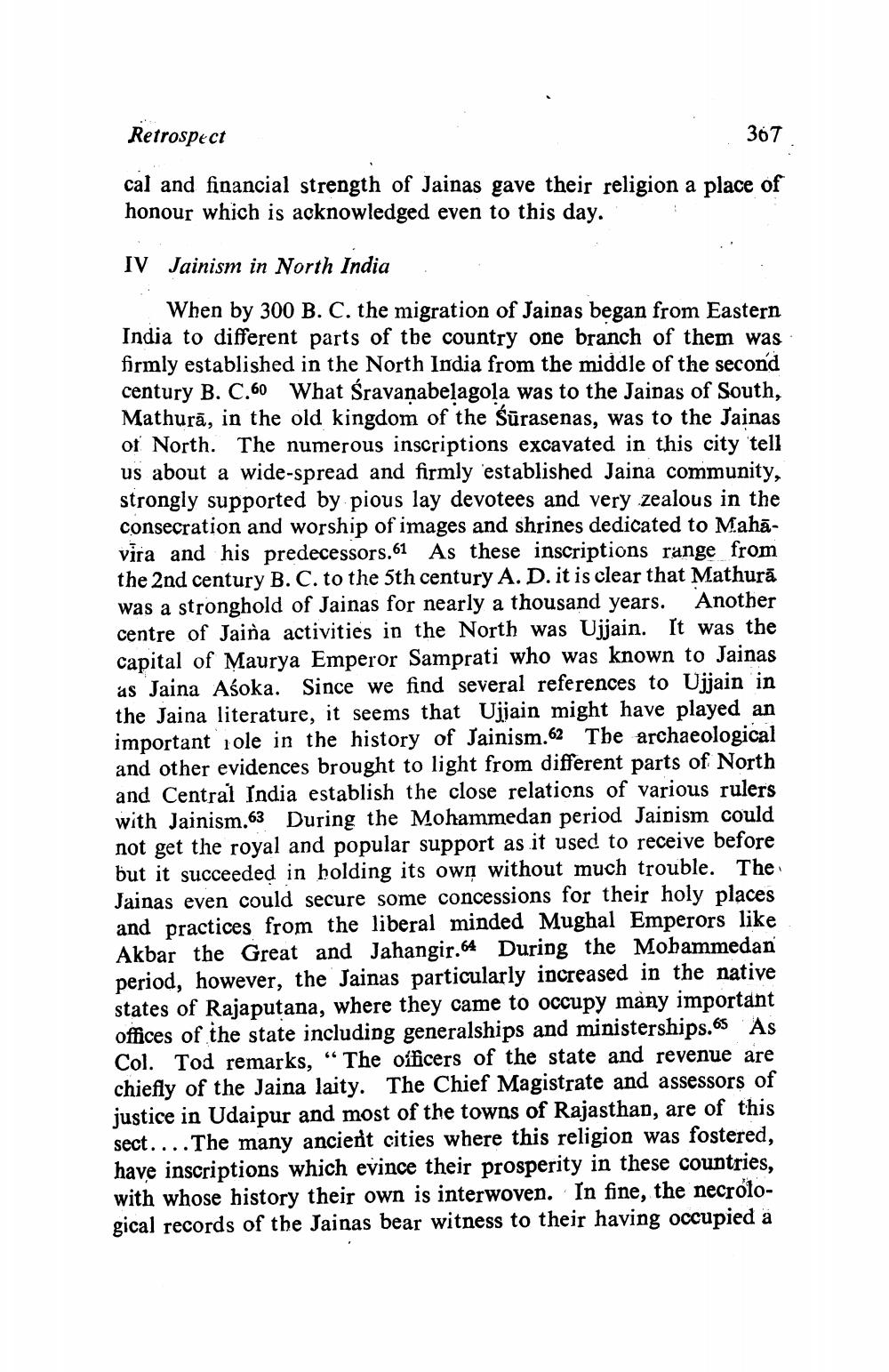________________
Retrospect
367
cal and financial strength of Jainas gave their religion a place of honour which is acknowledged even to this day.
IV
Jainism in North India
When by 300 B. C. the migration of Jainas began from Eastern India to different parts of the country one branch of them was firmly established in the North India from the middle of the second century B. C.60 What Śravanabelagola was to the Jainas of South, Mathurā, in the old kingdom of the Śūrasenas, was to the Jainas of North. The numerous inscriptions excavated in this city tell us about a wide-spread and firmly established Jaina community, strongly supported by pious lay devotees and very zealous in the consecration and worship of images and shrines dedicated to Mahāvira and his predecessors.61 As these inscriptions range from the 2nd century B. C. to the 5th century A. D. it is clear that Mathurā was a stronghold of Jainas for nearly a thousand years. Another centre of Jaiña activities in the North was Ujjain. It was the capital of Maurya Emperor Samprati who was known to Jainas as Jaina Asoka. Since we find several references to Ujjain in the Jaina literature, it seems that Ujjain might have played an important iole in the history of Jainism.62 The archaeological and other evidences brought to light from different parts of North and Central India establish the close relations of various rulers with Jainism.63 During the Mohammedan period Jainism could not get the royal and popular support as it used to receive before but it succeeded in holding its own without much trouble. The Jainas even could secure some concessions for their holy places and practices from the liberal minded Mughal Emperors like Akbar the Great and Jahangir. 64 During the Mohammedan period, however, the Jainas particularly increased in the native states of Rajaputana, where they came to occupy many important offices of the state including generalships and ministerships. As Col. Tod remarks, “The oíficers of the state and revenue are chiefly of the Jaina laity. The Chief Magistrate and assessors of justice in Udaipur and most of the towns of Rajasthan, are of this sect. ... The many ancient cities where this religion was fostered, have inscriptions which evince their prosperity in these countries, with whose history their own is interwoven. In fine, the necrological records of the Jainas bear witness to their having occupied a




